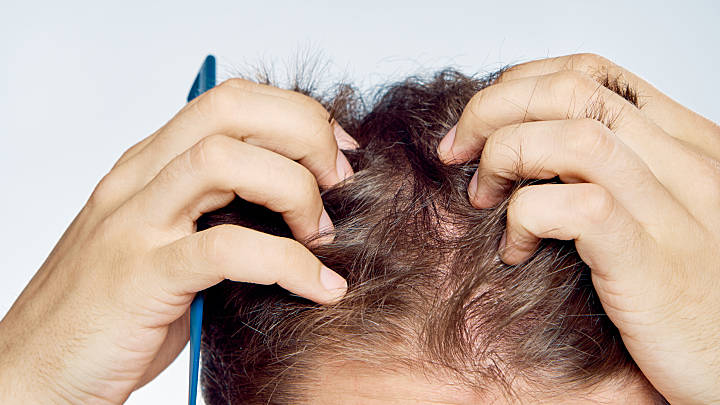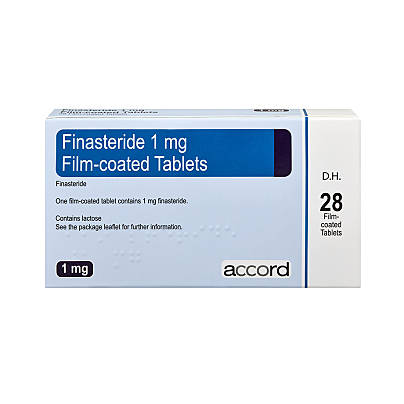Early Signs of Hair Loss

Medically reviewed by
Dr Kathryn BasfordLast reviewed: 21 Mar 2022
Are you noticing the early signs of hair loss on your scalp? You’re not alone, as it’s a fairly common condition. Over a third of men in the UK above the age of 30 will experience male pattern hair loss.
There are many options that are both affordable and effective at helping restore your hair or stop further hair loss.

What are the early signs of male pattern hair loss?
The early signs of hair loss can happen on different parts of your scalp. You might notice the first signs of hair thinning if you’re losing hair in the following places:
- your temples (the sides of your head)
- the crown of your head (the topmost part, also called the vertex)
You may also have a receding hairline. This is where the hairline on the sides of your head will start to move back, and it’s normally a condition that runs in your family.
Remember that hair loss is common as you get older, but there are a few treatments you can try to slow it down, and even stop it.
Does thin hair mean balding?
Thin hair can have a number of different causes. Male pattern baldness is one possible case. Nearly all men will notice some hair loss over their lives. How quickly the thinning leads to baldness will vary between men.
Sometimes thin hair might be a sign that you have other health problems that need to be investigated by a doctor. This can range from not getting enough iron in your diet, or having thyroid disease.
You might be using hair products that thin your hair, so try using something new and see if it makes a difference.
from £25.00
from £47.00

No results found.
Please check your spelling or try another treatment name.
What are the most common reasons for hair loss in men?
Hair loss can be a natural part of aging. However, when this happens faster or at a younger age, it is most commonly because of male pattern baldness. Male pattern baldness is also known as androgenic alopecia. It is a genetic condition, which means it runs in families, and makes your hair more sensitive to DHT (dihydrotestosterone). DHT is a form of testosterone, a male hormone. It thins the hair and makes it fall out more quickly.
You can get treatment for male pattern hair loss to help you stop going bald and reduce your hair loss.
Other common reasons for hair loss in men can be due to conditions such as:
- thyroid problems
- vitamin deficiencies or anaemia, like low iron levels
- alopecia areata, which is an autoimmune condition that causes patchy hair loss
- skin conditions, like psoriasis and fungal infections
- side effects from medication
- conditions like syphilis or systemic lupus erythematosus
Hair loss caused by these issues will often get better if the condition itself is treated.
Can you reverse hair loss?
If started early enough, treatments can help to slow down hair loss, but if there has already been a lot of hair loss, these are less likely to reverse the hair loss.
Medicines such as finasteride and minoxidil can help to slow down hair loss and promote hair growth. Minoxidil works by helping blood flow to your hair and prolonging the growth phase of your hair follicles.
Finasteride stops your hair follicles from thinning by stopping testosterone from being changed to DHT, which helps to reverse the balding process.
What is the best treatment for male hair loss?
There are two medications that can be used to treat male pattern hair loss.
Finasteride is a tablet medication that is taken every day. It stops your body from changing testosterone to DHT, stopping the effect on the hair follicles. Finasteride has been shown to work for male pattern hair loss when taken every day. It takes 3 to 6 months to start to work, and only continues to work while you take it. It helps to slow down hair loss, and does help with some new hair growth. You need a prescription from a doctor to use finasteride.
Another treatment for male hair loss is minoxidil, or Regaine. You need to apply Minoxidil as a liquid or foam to your scalp every day to see results and prevent hair loss. Similar to finasteride, it can take a few months to see if minoxidil works for you. There is a chance that minoxidil can help you regrow your hair if you use it for a long time.

Dr Kathryn Basford is a qualified GP who works as a GP in London, as well as with ZAVA. She graduated from the University of Manchester and completed her GP training through Whipps Cross Hospital in London.
Meet our doctorsArticle created: 11 Nov 2021
Last reviewed: 21 Mar 2022
-
Hair loss (NHS) [Feb 2021] [accessed October 2021]
-
Finasteride 1mg film-coated tablets (SmPC) [Oct 2018] [accessed October 2021]
-
Regaine for Men Extra Strength Scalp Foam / Minoxidil (SmPC) [Apr 2021] [accessed October 2021]




(Reviews are for ZAVA UK)


GMC: 7074021

GMC: 6149061

GMC: 7085115









